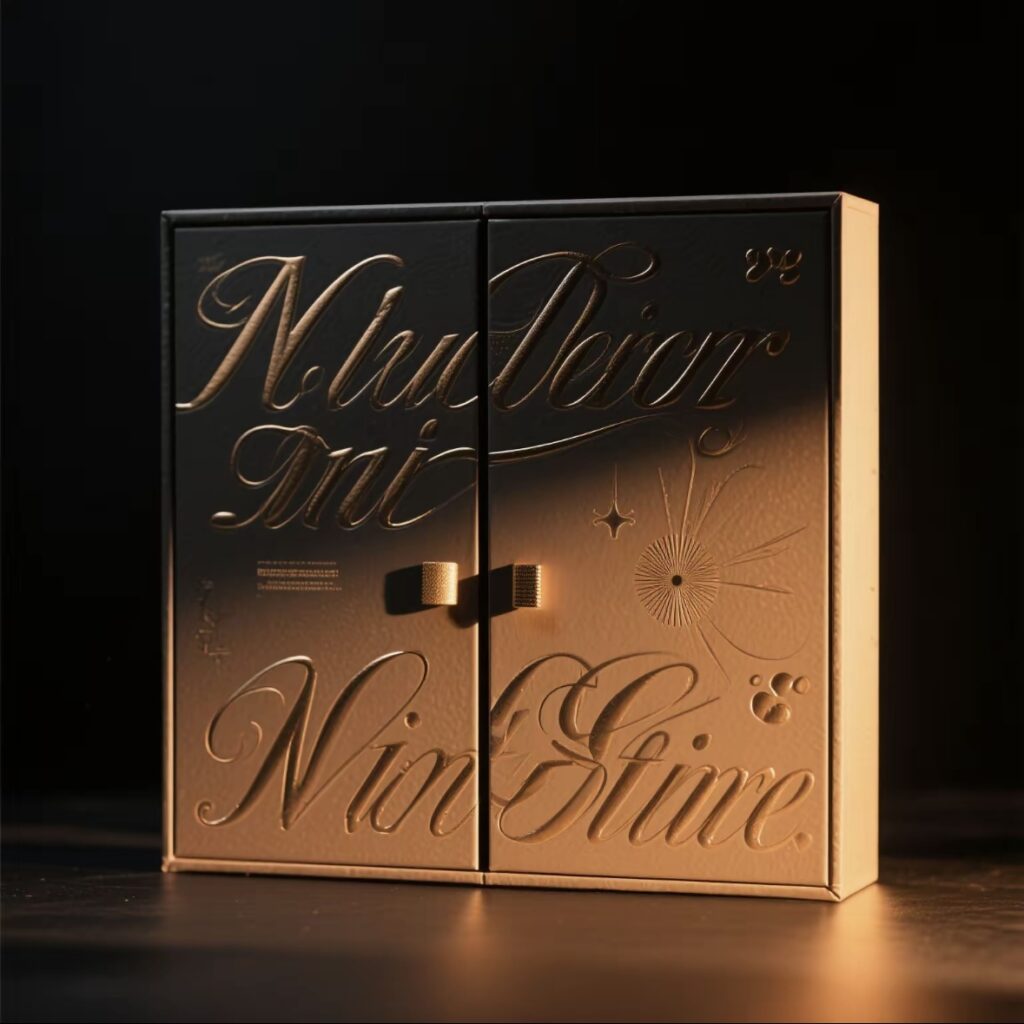Double Insert Box
Choosing the right box type is crucial for effective packaging, and the double insert box is made from a single piece of folded cardboard, featuring two opposite inserts that slide into corresponding slots to secure the box.
Pros: First of all, the design is simple and easy to assemble. Additionally, it saves space and is convenient for shipping and storage.
Cons: However, the appearance is plain, and it has limited weight capacity. Also, the sealing is not very tight.
Snap-Bottom Box
This packaging box has a simple, neat design with a reinforced bottom that snaps into place, providing decent strength and some sealing.
Pros: For one thing, it holds weight well. Plus, assembly is fairly easy, and it looks clean.
Cons: On the downside, the seal isn’t perfect, and the design isn’t very flexible.
Auto-Lock Bottom Box
The bottom of this box uses special folds and inserts that lock automatically when folded, creating a sturdy, sealed base.
Pros: To begin with, it’s great for automated production. Moreover, it’s stable, strong, and has good sealing.
Cons: Unfortunately, the design is more complicated, so it costs more.
Telescopic Box (Heaven & Earth Box)
This packaging box has two parts—a lid and a base—that fit snugly together, usually in a square or rectangular shape.
Pros: First of all, it makes products look high-end. What’s more, full automation reduces errors.
Cons: But, it uses more material, so costs are higher. Also, it demands better materials and craftsmanship.
Mailer Box (Airplane Box)
When unfolded, this box looks like an airplane. Made from corrugated cardboard, it forms a single piece without glue, saving production costs.
Pros: For starters, it’s cost-effective and has good crush resistance. Plus, it folds easily and saves space.
Cons: However, the look is basic, printing quality is limited, and it’s not very waterproof.

Flip-Top Box
This box has a lid that flips open. Some designs use magnets or stickers, and they come in single or double-lid styles.
Pros: First, it’s easy to open and protects products well. Additionally, it’s customizable with prints.
Cons: But, printing raises costs, and the hinge can wear out over time.
Drawer Packaging Box
Made of an outer sleeve and an inner tray (like a drawer), this sturdy design often uses multiple layers.
Pros: To start, the sliding design is unique and saves vertical space. Plus, it looks sleek.
Cons: However, the complex structure increases costs, and smooth sliding requires precise manufacturing.
Book-Style Box
Shaped like a book, this box opens like one too. Often used for high-end gifts, it may include magnets or metal plates.
Pros: First of all, it’s perfect for cultural or luxury items, boosting perceived value.
Cons: But, production is costly, and frequent opening can damage it.
Handled Packaging Box
This box has a strong body with a reinforced bottom and a handle (rope, cardboard, or plastic).
Pros: For one thing, it’s easy to carry and holds weight well.
Cons: However, heavy items can strain the handle or warp the box.
Cylinder Box
A round tube-shaped box, often seamless, used for cylindrical products.
Pros: First, the shape stands out and fits round items perfectly. Plus, it’s visually appealing.
Cons: On the other hand, it wastes some space, isn’t stackable, and is harder to pack.

Window Box
This box has a cut-out window (sometimes covered with PVC/PET) to display the product inside.
Pros: First, it shows the product clearly, building trust. Also, it sparks curiosity.
Cons: But, the window raises costs and weakens the box’s strength.
Nested Box (Set Box)
Multiple boxes stacked by size, often used for gift sets.
Pros: For starters, it fits different products together, adding value.
Cons: However, it’s expensive, bulky, and requires specific product sizes.
Shaped Packaging Box
Uniquely designed with creative shapes, often for gifts.
Pros: First, it’s artistic and eye-catching, boosting sales.
Cons: But, it’s costly to make, slow to produce, and needs careful shipping.
Hanging Box
Designed to hang on store displays for better visibility.
Pros: First of all, it grabs attention and increases exposure.
Cons: However, it must support weight securely and hang safely.
Display Box
Used to showcase products attractively.
Pros: For one thing, it draws customers in and adds value.
Cons: But, it offers little protection and gets dirty easily.
Double-Door Box
Opens from both sides like cabinet doors.
Pros: First, it looks elegant and fits various products.
Cons: However, it doesn’t secure items well during shipping.

Folding Packaging Box
Bends into shape when used, flat when stored.
Pros: First, it’s space-saving and protects items decently.
Cons: But, folding it too much can weaken the structure.
Rotating Box
Has a spinning window to show the product without opening.
Pros: First, it highlights the product’s value and is user-friendly.
Cons: However, production is complex, and the mechanism can break.
Polygon Box
A multi-sided box (hexagon, octagon, etc.) for a premium look.
Pros: For one thing, it feels luxurious and memorable.
Cons: But, it’s harder to make and costs more.
Tray Box
An open-top box for easy access.
Pros: First, products are easy to grab, and it’s affordable.
Cons: However, it offers less protection and doesn’t stack well.
Roof-Shaped Packaging Box
Shaped like a house roof, often for liquids or powders.
Pros: First, it stands out and pours easily.
Cons: But, it’s pricey and takes up space.
Tear-Open Box
Opens by tearing along pre-cut lines.
Pros: First, it’s user-friendly and seals tightly.
Cons: However, the design is complex and needs special materials.
Choose the Right Box Type?
Picking the right box type for your product doesn’t have to be hard. First, think about what you need most:
- If you want something cheap and easy, go for a double insert box or mailer box.
- For better protection, consider a snap-bottom box or auto-lock bottom box.
- If looks matter (like for gifts), try a book-style box, cylinder box, or shaped box.
- For easy access, choose a flip-top box, tray box, or tear-open box.
- To display products in stores, look at window boxes or hanging boxes.
Remember, the right box type not only keeps your product safe but also makes it stand out. So, think about cost, protection, and appearance before deciding. That way, you’ll get the best results!










